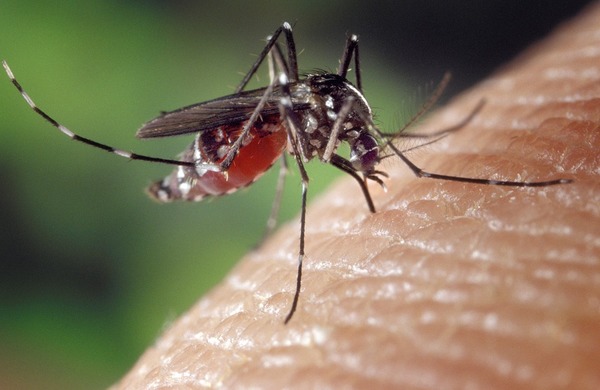Noosa Council started aerial spraying of Noosa Banks, Noosa River Islands, Lake Doonella and Lake Weyba to eliminate mosquito activity in the area on Tuesday morning.
A helicopter was used to distribute the spray, which is a combination of S-Methoprene and BTI (Bacillus thuringiensis subspecies israelensis).
Council says that the aerial spraying is to maximise the number of mosquitos controlled by targeting larvae, and while council have deemed the spray safe to humans and mammals, residents are concerned for marine life and other insects including bees.
Scott Whitaker from Hinterland Bees is concerned about the long term effect these sorts of chemicals have on insects and invertebrates.
“From a beekeeper’s point of view S-Methoprene is a larvicide; therefore, it allegedly does not kill adult bees, but any adult bee exposed to S-Methoprene will carry it back to their hive and contaminate the food of the developing larvae resulting in death.
“Beekeepers would not notice an immediate impact on their hives, rather they may notice a slow decline.
“Severely affected hives may perish outright or be susceptible to other hive diseases like chalkbrood, which is exacerbated when an under-populated colony cannot keep their brood at 34 degrees.
“A beehive is a finely balanced super-organism, when the balance is interrupted, it becomes unhealthy and unproductive and risks dying.
“The effects of S-Methoprene is slow-acting, like killing a tree from the roots up,” Mr Whitaker said.
“You can sympathise with people that had Ross River virsus and other mosquito borne diseases but there’s a bigger picture, trying to get a balance in the environment that can control mosquitos.
According to the National Pesticide Information Centre website, Methoprene has varying toxicity levels in a number of species that are found in the Noosa eco-system.
“Methoprene is moderately toxic to some fish and low in toxicity to others.
“Methoprene can accumulate in fish tissues. It is slightly toxic to crustaceans such as shrimp and crayfish, and very highly toxic to freshwater invertebrates.”
“Methoprene is relatively non-toxic to birds, it also appears to be low in toxicity to adult bees, although bee larvae may be more sensitive.” (Methoprene General Fact Sheet, 2012).
Though Noosa Council have fought allegations of ‘misinformation’ with a statement to their social media claiming that the mosquito problem in the Shire is a health and safety concern.
Environmental Health Co-ordinator Sunil Kushor said that treating the marsh-bred mosquitos after a king tide is essential.
“We use a controlled substance that is approved in Australia and used by all councils across Queensland and all of Australia to control this specific species.
“By helicopter we drop the substance mixed with sand, so it’s quite heavy, and it targets the area pretty well, lands on the salt marsh and then kills the larvae and prevents it from developing into full grown mosquitos.
Mr Kushor also said it’s not harming the environment beyond the salt marsh, and that they’re not targeting anything that flies like the bees.
“Bees don’t normally go near salt water, they don’t drink off salt water so there is no risk for bee’s etcetera,” Mr Kushor said.
The Noosa Council said in their statement that their aim is to protect residents from mosquito-borne illnesses such as Ross River and Barmah Forest.







